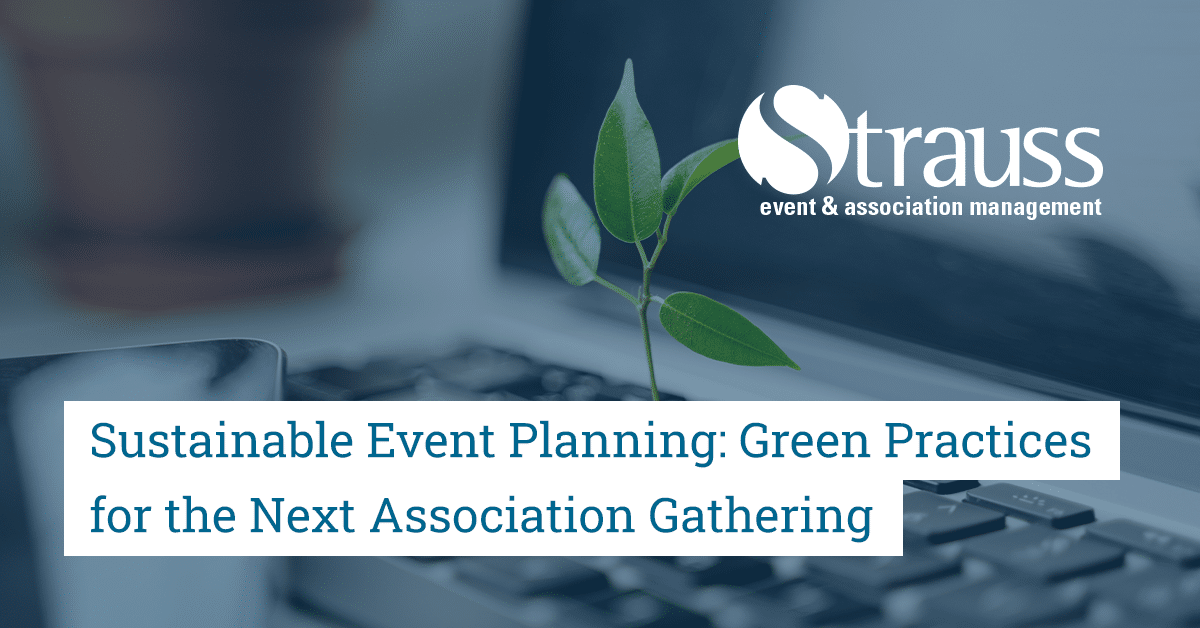Sustainability is more than just a buzzword these days—it’s something everyone should be paying attention to, including the events industry. As associations look to align with environmental and social goals, making an event more sustainable is no longer just a nice idea; it’s essential.
Plus, attendees love it when they see associations putting effort into being eco-friendly. Let’s dive into some practical ways that can make association events more sustainable, with real-life examples to guide the process.
Start with Clear Goals
First things first, set some clear sustainability goals for the event. Think about what needs to be achieved and make sure the goals are specific and realistic. For instance, aim to cut down waste by 50%, source most of the materials locally, or use only renewable energy.
Example: For a mid-sized conference, aim to reduce single-use plastics by 75%. Provide attendees with reusable water bottles and set up water refill stations all around the venue.
Pick the Right Venue
The choice of venue can make a big difference. Look for places with green certifications like LEED or ISO 20121. These venues are designed to be more sustainable and often have energy-saving features built in. Also, consider how easy it is for people to get the event using public transport.
Example: Choose a convention center with LEED Platinum status, known for its energy efficiency and sustainable practices. Make sure it’s close to public transport options to reduce single car travel.
Cut Down on Waste
Waste management is a big part of going green. Start with a waste audit to see where changes can be made, then take action:
- Go Digital: Skip the paper programs and tickets. Use apps (such as EventMobi), emails, and social media to keep attendees informed. Use an event app for schedules, maps, and speaker info, eliminating the need for printed materials.
- Reusable and Biodegradable: Opt for reusable or biodegradable materials for signage, decorations, and utensils. Provide bamboo cutlery and compostable plates instead of plastic utensils and Styrofoam plates.
- Recycling and Composting: Before booking the venue, have a discussion with the management on how they handle recycling and composting. Check if they have clear labels on bins for all types of wastes. Check with the venue if they are able to create a waste sorting station with separate bins for recyclables, compostables, and landfill waste.
Sustainable Catering
Food is a huge part of any event, and it can have a big environmental impact. Choose caterers who prioritize local, organic, and seasonal ingredients. Offering plant-based options can also make a difference.
Example: Check with the hotel if they work with local farms for their ingredients in their meals. Some venues can arrange for leftover food to be donated to a local food bank. Event planners can also request the venues that all items used in the catering be more sustainable such as using a water dispenser instead of water bottles, eliminating paper napkins and opting for cloth napkins instead.
Green Transportation
Transportation can add a lot to the event’s carbon footprint. Encourage attendees to use public transport, carpool, or bike to the event. Provide info on public transport options and offer perks for eco-friendly travel.
Example: Provide a free shuttle service from the hotel to the main event venue for larger events that span multiple days. Shuttle services is also helpful for after-party events involving alcohol to ensure safety for all attendees as well. If a shuttle is not in the budget, give a discount on registration fees for attendees who use public transport.
Save Energy
Cutting down on energy use is crucial. Pick venues that use renewable energy sources and implement energy-efficient practices.
- Use LED lighting instead of traditional bulbs.
- Make sure lights and equipment are turned off when not in use.
- Maximize natural light and ventilation whenever possible.
Get Attendees Involved
Make the attendees part of the green efforts. Tell them about the sustainability goals and how they can help. Organize workshops or talks on eco-friendly practices to engage and educate them.
Example: Host a sustainability workshop or education session where experts discuss green practices in the industry. Provide attendees with a digital sustainability guide with tips on reducing their environmental impact.
Conclusion
Making association events sustainable is essential for reducing environmental impact and meeting the expectations of today’s attendees. By setting clear goals, picking the right venue, cutting down on waste, choosing sustainable catering, promoting green transportation, saving energy, and engaging attendees, a successful and memorable event can be created. Embracing these green strategies not only benefits the planet but also enhances the association’s reputation as a forward-thinking, responsible organization.

